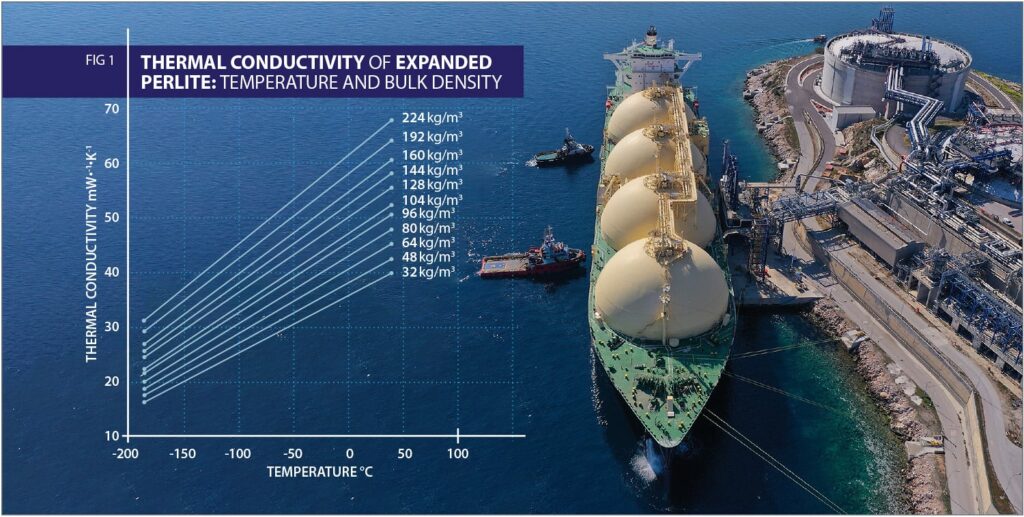
.
This presents a comprehensive analysis of the thermal conductivity of expanded perlite, focusing on its variation with particle diameter, density, vacuum pressure, and temperature. Emphasizing cryogenic and vacuum conditions, the data highlights perlite’s performance under extreme conditions, which is critical for the design of relevant applications like vacuum insulation and vacuum insulated panel (VIP) systems. By providing insights into perlite’s insulating properties, this study aims to support advancements in energy-efficient solutions for cryogenic storage and transport. The data presented have been obtained by the bibliography, reflecting the values measured at this time for specific sample only.
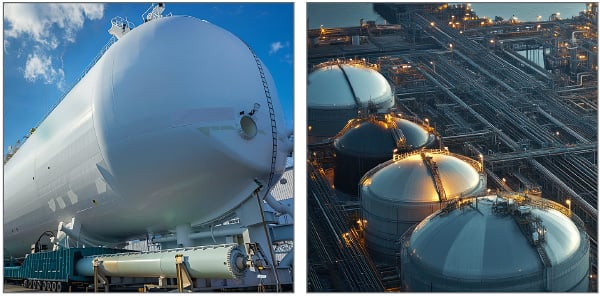
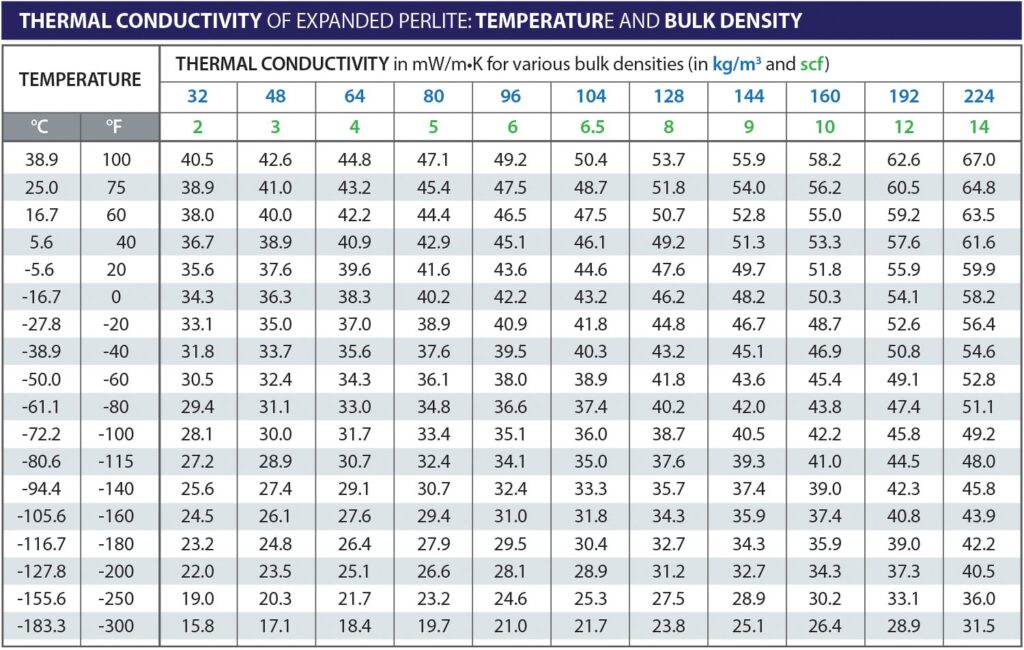
The thermal conductivity of perlite is dependent on both temperature and bulk density, as depicted in the Figure 1 graph containing relevant calculations made by Adams, based on experimental measurements of other researchers[1].
It is shown that as the temperature decreases, the thermal conductivity of expanded perlite also decreases in all considered densities, implying a better insulation performance at cryogenic temperatures. In inorganic materials, heat is primarily conducted by lattice vibrations known as phonons. At cryogenic temperatures, conduction mechanism becomes less effective at low temperatures due to the reduced phonon activity. In general, the phonons’ ability to transport heat depends on their mean free path, which is the average distance a phonon travels before scattering. At low temperatures, the number of phonons decreases and their energy lowers leading to fewer phonon scattering events. Also, for expanded perlite, which is highly porous and has many internal boundaries, the scattering of phonons by these boundaries reduces the mean free path, thereby reducing thermal conductivity.
Knowledge of the thermal conductivity of expanded perlite in terms of the vacuum pressure is important because it explains how insulating performance under the conditions prevail in VIP panels or in other vacuum insulation properties. Figure 2 presents the thermal conductivity of expanded perlite under different vacuum pressure as referred in different studies. Information about the studies and the measurements’ conditions are tabulated in Table 2.

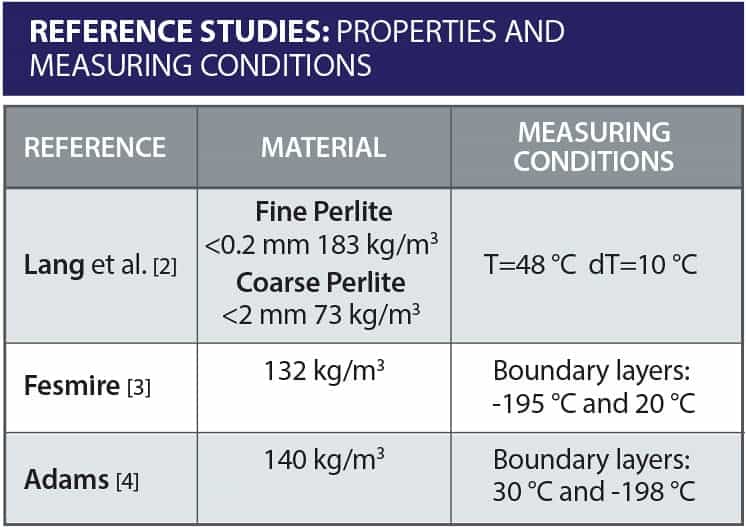
Clearly, the thermal conductivity of expanded perlite is especially influenced by low pressures, which is critical for vacuum insulation applications.
Figure 3 presents the effect of temperature and pressure on the thermal conductivity of expanded perlite. Data are presented in Table 3.

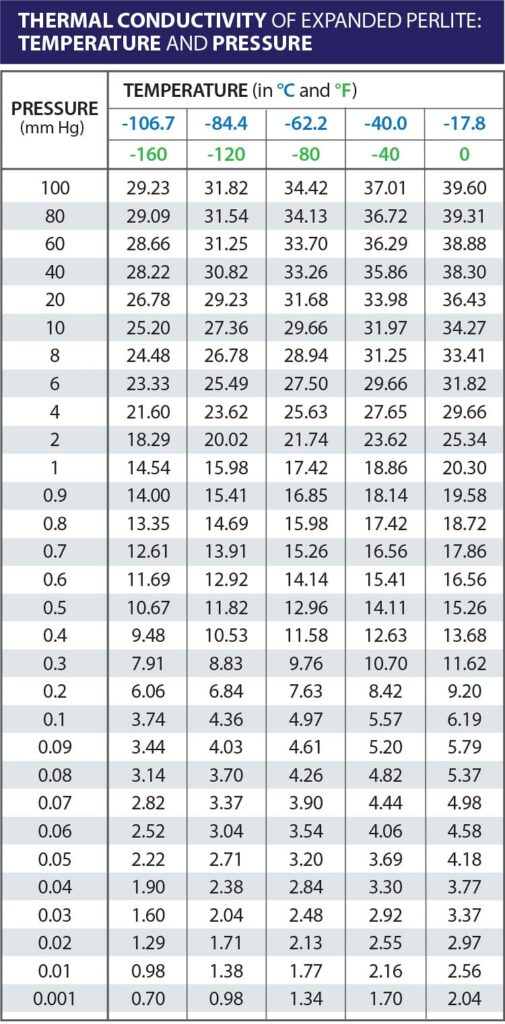
BIBLIOGRAPHY
[1] Adams, L. Thermal Conductivity of Perlite at Low Temperatures. J. Cryog. Soc. Am. 1965, 117–118.[2] Lang, S.; Gerschitzka, M.; Bauer, D.; Drück, H. Thermal Conductivity of Vacuum Insulation Materials for Thermal Energy Stores in Solar Thermal Systems. Energy Procedia 2016, 91, 172–181, doi:https://doi.org/10.1016/j.egypro.2016.06.196.
[3] Fesmire, J.E. Standardization in Cryogenic Insulation Systems Testing and Performance Data. Phys. Procedia 2015, 67, 1089–1097, doi:https://doi.org/10.1016/j.phpro.2015.06.205.
[4] Adams, L. Thermal Conductivity of Evacuated Perlite. J. Cryog. Soc. Am. 1965, 1, 249–251.
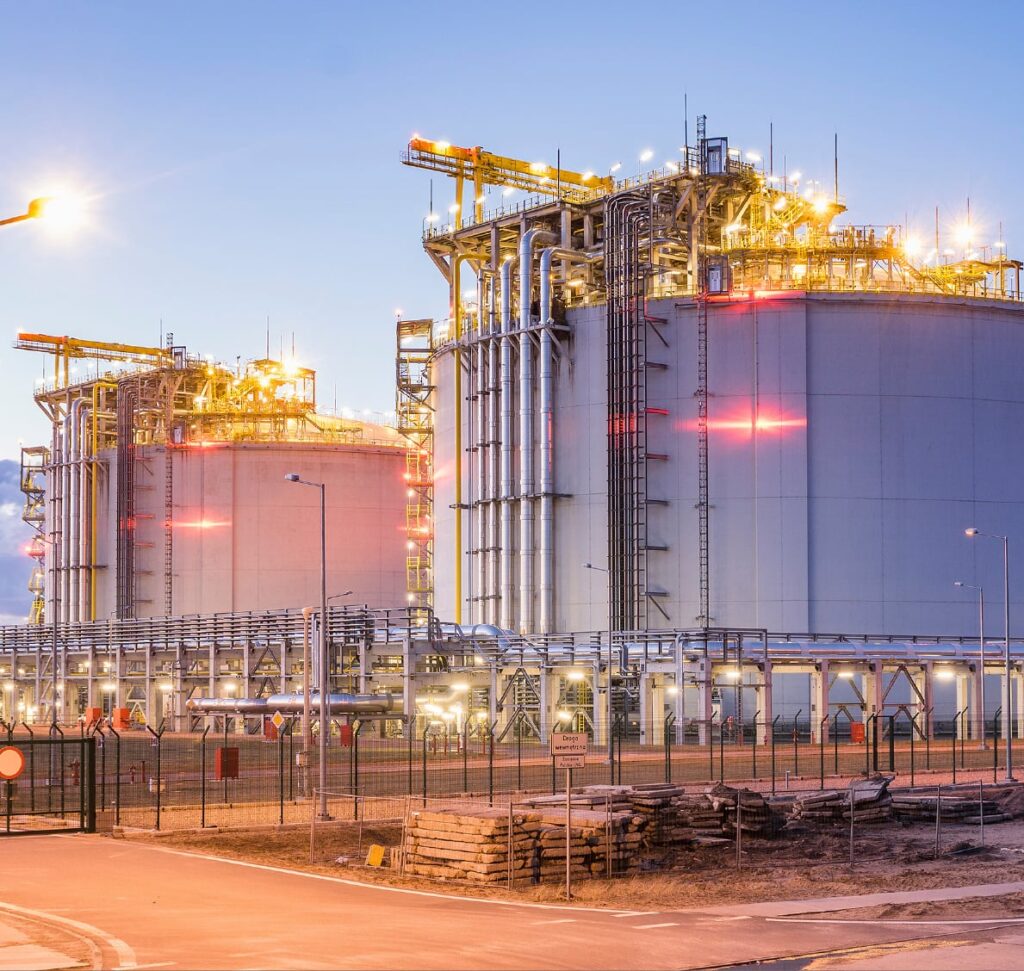
To download a .pdf of the Critical Perlite Properties in Cryogenic and Vacuum Conditions brochure, click here.
If you have technical questions on this topic, please email the technical contacts listed on our contact page.
Copyright © 2024 Perlite Institute All Rights Reserved
